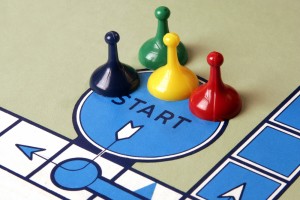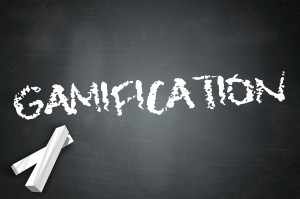Theodore Roosevelt once said, “When you play, play hard; when you work, don’t play at all.” The 26th U.S. President was absolutely right from his point of view; it reflects the perception towards work in that era. But times tend to change. 21st century is the age of competing ideas, websites, computers, televisions, mobile devices in our offices and homes and even during our car-rides back home; all this is keeping us from connecting with much of what we see. It is increasing our stress and potentially making us dumber. The trend isn’t slowing down, and it is affecting industries across the spectrum – from the defense services to finance, engineering to retail. But there is one industry that seems to be immune to the shattering: games. While from the outside, games might seem like part of the problem, they are in fact the one place where we are increasingly finding ourselves both connecting and enjoying our connection.
As a result of a series of changes in demographics, technology and the competitive landscape, smart companies as well as nonprofits and governments, are increasingly turning to games as a way of reinventing their organizations. They are engaging customers like never before, aligning employees, and driving innovation that seemed virtually impossible only a decade ago, only through one concept: Gamification.
Gamification as a technique is the use of “game theory and game elements”, which can be collectively termed as game mechanics, in a non-game context, mainly businesses. It is the concept of applying game mechanics and game design techniques to engage and motivate people to achieve their goal. Gamification taps into the needs and desires of the people involved. And it revolves around the idea of Status and Achievement.
An organization always strives to nurture employees with the status of their achievements, for their contribution to boost productivity and continue to thrive. Customers gain a lot of additional perks that might include goodies, special discounts, facilities, VIP statuses, provided; they buy more goods and services and remain loyal. The use of Gamification makes it seamlessly possible.
Gamification was a term that was first coined in 2003 by Nick Pelling, but did not gain popularity until 2010. The term Gamification began to gather interest and a following in 2010 when companies such as Badgeville and Bunchball started using it to describe their behavior platforms. Gartner spurred the popularity of Gamification by saying that “More than 50 Percent of Organizations that Manage Information Processes Will Gamify Those Processes” and also added Gamification to their hype cycle. In 2011, more companies started developing Gamification platforms as they became more popular.
The research company Gartner predicts that by 2015, a gamified service for consumer goods marketing and customer retention will become as important as Facebook, eBay, or Amazon, and more than 70% of Global 2000 organizations will have at least one gamified application.
The five most commonly used mechanics in Gamification are: Points, Badges, Levels, Leaderboards, and Challenges which are mainly used to motivate engagement for higher profitability and productivity in business.
1. Challenges: Challenges could be referred to as tasks or activities to be performed by the users i.e. employees in the organization and customers, fulfilling which, they can be rewarded with Points.
2. Points: Points are intangible but act as a social proof of accomplishments.
3. Badges: Badges can be considered as higher than points, the symbols of respect accredited. Badges can be tangible.
4. Levels: Levels can be the degrees of difficulty in performing certain task. Levels are always ascending. Examples of levels: Novice, Rookie, Easy, Medium, Mediocre, High, Master, etc.
5. Leaderboards: These are spots where everyone wants to reach. Leaderboards reflect the names of achievers and successors. Leaderboards stimulate respect and fame for achievers among the rest of the group of aspirants.





Well said Sir Roosevelt!!!!
good article